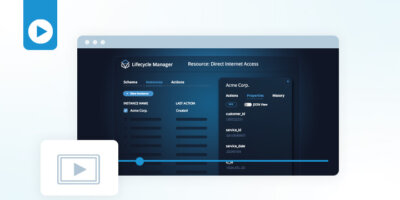Itential Lifecycle Manager Demo Overview
In Itential’s Lifecycle Manager, NetDevOps teams can use automations to track the configuration and operational details of any process or service. If an Itential user is delivering a service to end users, they can manage that service from a central location, even when resources and actions are distributed across hybrid infrastructure.
Lifecycle Manager ties it all together, providing an overall lifecycle around any process or service you offer so you can perform needed actions and track details across the entire lifecycle. This makes identifying the components and status of services more consistent and repeatable, and it also enables teams to easily decommission infrastructure across a wide range of domains without missing anything easily overlooked.
In this demo, walk through an example of a Lifecycle Manager use case, a service that involves cloud infrastructure provisioning, data center infrastructure, and changes to security rules. You’ll learn how to:
- Define a Resource Model against a service.
- Define Actions which can be performed across different domains and technologies.
- Track Actions as they complete and see the lifecycle of an automation in real time.
- Easily provision new services or decommission current services based on the existing Resource Model.
- Take advantage of all the data tracking capabilities Lifecycle Manager provides.
